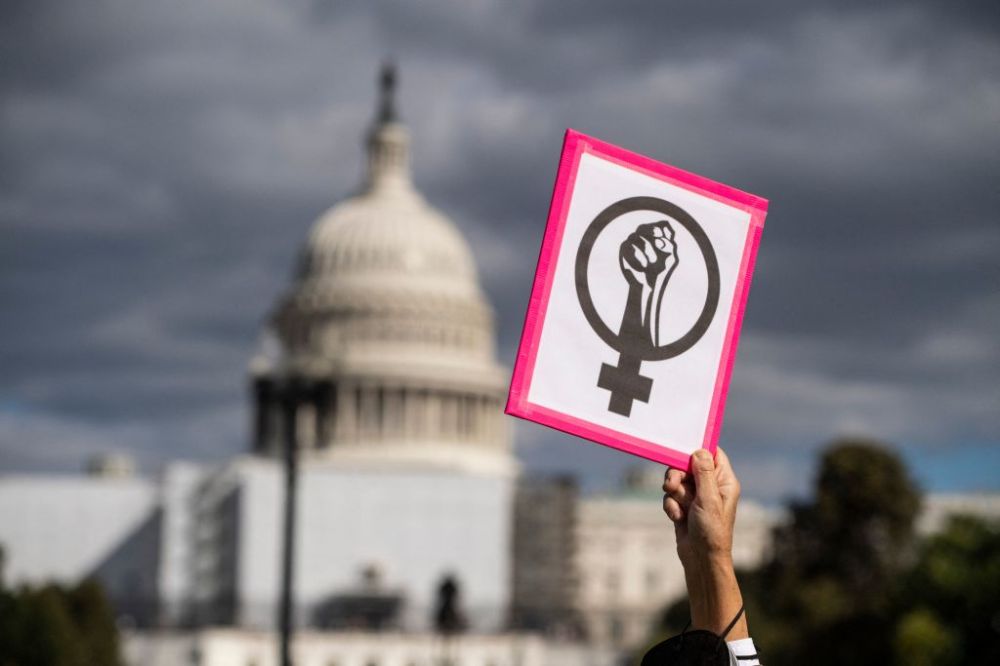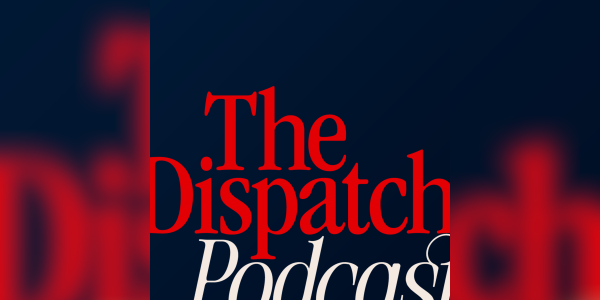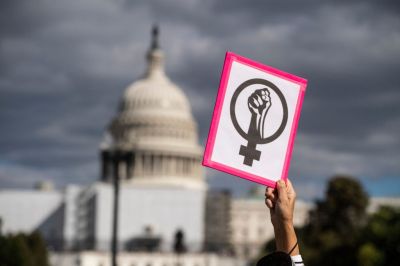The last time we vibed together about the midterms I ended with a warning from Nate Cohn. Democrats are polling suspiciously well this year in states where the polls overestimated Joe Biden’s support in 2020, Cohn noted in mid-September. The recurring problem pollsters have had trying to capture the full extent of Republican support during the Trump era might be happening again.
Let’s start our latest vibe check with another, related warning from Cohn. Here he was last week writing about the new survey he’s overseeing for the New York Times.
In the poll we have in the field right now, only 0.4 percent of dials have yielded a completed interview. If you were employed as one of our interviewers at a call center, you would have to dial numbers for two hours to get a single completed interview.
No, it wasn’t nearly this bad six, four or even two years ago. You can see for yourself that around 1.6 percent of dials yielded a completed interview in our 2018 polling.
Whether for reasons political, technological, or otherwise, Americans are growing less willing to take polls over the phone. That means those who are still willing to take them are, well, freaks. And you’re not going to get a representative sample of the American electorate by exclusively polling freaks.
Jitters about another cycle of unreliable data run so deep within the industry that RealClearPolitics has taken to posting an “unskewed” version of its polling average pegged to how badly the presidential polls missed in a given state in 2020. Thus a lead of 4.3 points for John Fetterman in Pennsylvania’s Senate race becomes a “lead” of 1.6 points for Mehmet Oz in the unskewed version.
That some data sites have resorted to such tactics to try to grope their way toward electoral reality because the polls can’t be trusted has the other Nate, Nate Silver, contemplating early retirement.
All of this is to say that even the pros are reluctant to make predictions about next month’s midterms, and not just because polling is less credible than it’s been at any time in memory. There’s also the inscrutable “irresistible force meets immovable object” dynamic that I wrote about last week. The end of constitutionally protected abortion rights in the United States four months before a national election is the culture-war equivalent of a nuclear explosion. No one knows what the aftermath looks like because no one has lived through it before.
We can’t trust the polls and we can’t make confident forecasts about how the electorate might react to the end of Roe v. Wade. But we sure can stick our fingers in the wind and enjoy us some vibes.
And the vibes lately say that “Roevember” is canceled.
Let’s be optimists and assume that American political polling hasn’t descended yet to the level of haruspicy, that there are still insights to be gained from looking at numbers. I think there are. While I don’t have much faith that any particular data point is accurate, trends that track across multiple polls are more convincing as indicia of what voters are thinking.
If all you had to go on to forecast the midterms was presidential job approval, you’d conclude that Democrats are doing … okay. Not good, certainly. Not even “not bad.” But Biden has climbed a long way out of a deep hole.
He’s gained more than 6 points since his summer nadir of 37.1 percent and is now hovering at around the highest job approval he’s had all year. Again, no one would call 43.3 percent good; Trump had the same job approval on October 16, 2018, a few weeks before Democrats flipped the House. But an upward trend in the home stretch of the campaign would seem to augur well for Biden’s party in November, maybe enough so to hold the Senate.
So why does it feel like things have started to go to hell for them?
Start with the generic ballot. Two weeks ago I noted a trend back toward the GOP after a rough stretch for the party in August. That trend has since continued, with the Republicans’ lead doubling from 0.9 points to 1.8.
It’s not unusual to see a late break toward the out-party at the end of an election. Undecideds are finally thinking hard about their choices and stewing over all of the things that made them unhappy with total Democratic control of government over the last two years. And Republicans embittered by their party’s primaries may at last be “coming home” for the general election. Look no further than Pennsylvania, where MAGA voters who’ve digested endless ads over the past two months about Fetterman’s record on crime may have concluded that a blow-dried, Oprah-fied celebrity RINO is preferable to a cross between Bernie Sanders and King Kong Bundy.
Political “gravity” may be asserting itself, in other words, as tends to happen for the out-party in midterm elections. That doesn’t mean Dems are doomed everywhere: Certainly they could have a bad night nationally next month while Fetterman, Raphael Warnock in Georgia, Mark Kelly in Arizona, and other liberals in tight Senate races pull through. (Republicans gained Senate seats in 2018 despite being crushed in the House, remember.) But it’s not how you’d bet. Amy Walter noted recently that “the closest races in each election tend to break disproportionately toward one party.” A late trend toward Republicans on the generic ballot means a 50/50 Senate is likely to flip too.
Particularly since there’s more than gravity working for the GOP lately.
News, even big news, takes time to circulate through the electorate and begin moving public opinion, which may explain why Biden’s job approval has held steady following the new inflation numbers. Give it a week or two, though. Had Democrats been able to show progress on inflation with last week’s data, voters might have gone into the booth feeling optimistic. Instead they’ll make up their minds about the next Congress knowing that prices are still rising, that interest rates will therefore keep rising, and that the probability of a recession in the near term will rise accordingly.
The most prominent indicator of inflation has also begun working against Democrats again. After dropping to $3.77 per gallon in mid-September, the cost of gas rose steadily over the next three weeks to $4.03. OPEC’s decision to cut oil production by 2 million barrels per day should keep upward pressure on prices through the election, causing enraged Democrats to call for a sort of cold war with Saudi Arabia in retaliation. Again, a bit of optimism on this point among voters would have gone a long way toward helping Biden’s party in November. But the trend is the other way.
Offhand, short of a war going badly, I can’t think of a vibe that’s worse for a ruling party before an election than voters concluding they’ll pay more at the pump for the foreseeable future.
Conceivably all of the above could be true and “Roevember” might still materialize. Voters’ disgust over inflation and crime might be overwhelmed by their disgust at draconian abortion bans in red states. Casual voters who otherwise would have skipped the midterms might mobilize over the issue on Democrats’ behalf, confounding expectations about turnout. Undecideds, or even “soft” Republicans, could conclude that the urgent need to send a message about Roe requires voting liberal this time.
What is your vibe antenna telling you about that theory, though? Does it feel like Americans are getting more, rather than less, angry about the new abortion status quo?
Eyeball this new data from Gallup. It was collected during the first half of September, two months after the Dobbs decision came down. Are these the numbers you’d expect to see if a massive Roe backlash were in motion?
Is this the generic ballot trend you’d expect to see in a Monmouth poll that was published a few weeks after Gallup’s?
How about this trend from a new CBS survey? What sort of vibe about the salience of abortion are you getting here?
“[Y]ounger people don't seem quite as likely to turn out as they did in 2018,” CBS went on to say about its data. “Voters under 45 make up just a quarter of likely voters in our baseline estimates above, because they are simply less likely to say they'll turn out this year.” Would we imagine younger voters, the group whose lives are most directly affected by abortion policy, to be ambivalent about turning out if “Roevember” were bearing down on us?
That CBS poll had Republicans up 2 points, 47-45, on the generic ballot, by the way. The Times poll that Nate Cohn supervised was published yesterday and showed Republicans up 4 points, 49-45, a notable shift given that Democrats led by one in September. Tell me what sort of vibe you’re getting from this detail tucked away in the Times’ story about it.
The biggest shift came from women who identified as independent voters. In September, they favored Democrats by 14 points. Now, independent women backed Republicans by 18 points — a striking swing given the polarization of the American electorate and how intensely Democrats have focused on that group and on the threat Republicans pose to abortion rights.
...
[T]hose who identified abortion as the top issue remained flat, at 5 percent. There is a sizable gender split on the issue’s significance: 9 percent of women rated it as the top issue compared with just 1 percent of men.
...
[T]he poll showed that Republicans had entirely erased what had been an 11-point edge for Democrats among women last month in 2022 congressional races to a statistical tie in October.
Women trending Republican in the final weeks of the campaign isn’t what I’d expect if pro-choicers were about to swamp the polls and paint Congress blue. Nor would I expect to find that the share of Americans who say the economy is the most important issue has risen from 36 percent in the first flush after Dobbs to 44 percent today. But that’s what the Times data says.
Seriously bad vibes.
We’re deep into haruspicy now that we’re analyzing individual polls but I can’t resist sharing one more. One of the better results on the generic ballot that Democrats have had lately came from CNN, which put them up 50-47 on the national generic ballot in a survey published on Thursday. Read the fine print, though, and you’ll see that even that data looks grim for Biden’s party. In competitive congressional districts, they trail 48-43. Republican voters in competitive districts were also much more likely to say they’re extremely motivated to vote than Democrats were, 55-45. Winning elections by 30 points in New York and Oregon will be a cold comfort for liberals when they’re losing toss-up House races across the board next month.
Or rather, it would be a cold comfort if Democrats were on track to win by 30 in New York and Oregon. They aren’t. The latest polling has New York’s gubernatorial race within 6 points while Republicans are poised to capitalize on a three-way race to win in Oregon for the first time since 1982. Meanwhile, in congressional races the House GOP’s top super PAC is pouring millions into districts Biden won by double digits, strong circumstantial evidence that the national map has expanded. House Democrats, on the other hand, are in triage mode.
Heck, even Colorado might—might—be on the board.
All of which means one of two things. Either the polls are just as wrong as Cohn fears, if not more so, except that they’re grossly underestimating Democrats this time. Or “Roevember” is a bust.
Mostly a bust, I should say. Democrats are destined to win a few tight races here and there, and those victories will doubtless be credited to just enough of a Roe backlash at the polls to have tipped the balance. But the prospect of a true black-swan election in which the in-party defies all laws of modern political gravity to retain their majorities seems out the window. Why?
The consensus “take” on the morning after the election, I suspect, will be that the issue simply ran out of steam, and not just because voters have been overwhelmed by kitchen-table priorities. Republicans have been more careful around abortion lately, sometimes to a cynical degree, whereas some Democrats have been … not very careful.
The GOP doesn’t need to win the abortion debate, remember, all it needs to do is “neutralize” the issue so that voters can focus on those more favorable to the right, like rising crime. Ducking the topic, avoiding direct answers, and staying far away from calls for a national ban are simple ways to try to do that. I think the Republican mindset is “Voters want to vote for us this year. All we need to do is avoid giving them a good reason not to.” So that’s what they’re doing.
But an underrated reason for the issue’s declining salience is the fact that we haven’t seen the parade of horribles in media coverage that I, for one, expected would follow Dobbs. There have been horror stories for sure, none more notable than the story of a pregnant 10-year-old in Ohio who had to travel to Indiana for an abortion because of the six-week ban in her home state. But I assumed “abortion restrictions gone wrong” would be the hottest of hot topics for the press this fall, given pride of place by news outlets everywhere with the midterms bearing down and Democrats desperate to focus public attention on it.
It hasn’t happened. That coverage is out there but there’s not the sort of flood-the-zone attempt at saturation that conservatives duly skeptical of the media and its political agenda might have anticipated. Maybe there’s simply too much else going on for the press to give it the ink they’d like to. Global economic crisis, Hurricane Ian, possible nuclear war in Ukraine, the daily Trump drama — there are too many disasters happening that must be covered for reporters to let the so-called “Dobbs dystopia” beat crowd everything else out. The press would like to help midwife “Roevember,” I’m sure, but the news cycle won’t accommodate them. And so the Democratic effort to turn the midterms into a referendum on abortion has been, well, aborted.
After a month on the Dispatch front page, with our transition to a new platform finally behind us, this newsletter is moving to a subscription model. If you’d like to have the daily edition emailed to you, please subscribe here.







Please note that we at The Dispatch hold ourselves, our work, and our commenters to a higher standard than other places on the internet. We welcome comments that foster genuine debate or discussion—including comments critical of us or our work—but responses that include ad hominem attacks on fellow Dispatch members or are intended to stoke fear and anger may be moderated.
With your membership, you only have the ability to comment on The Morning Dispatch articles. Consider upgrading to join the conversation everywhere.